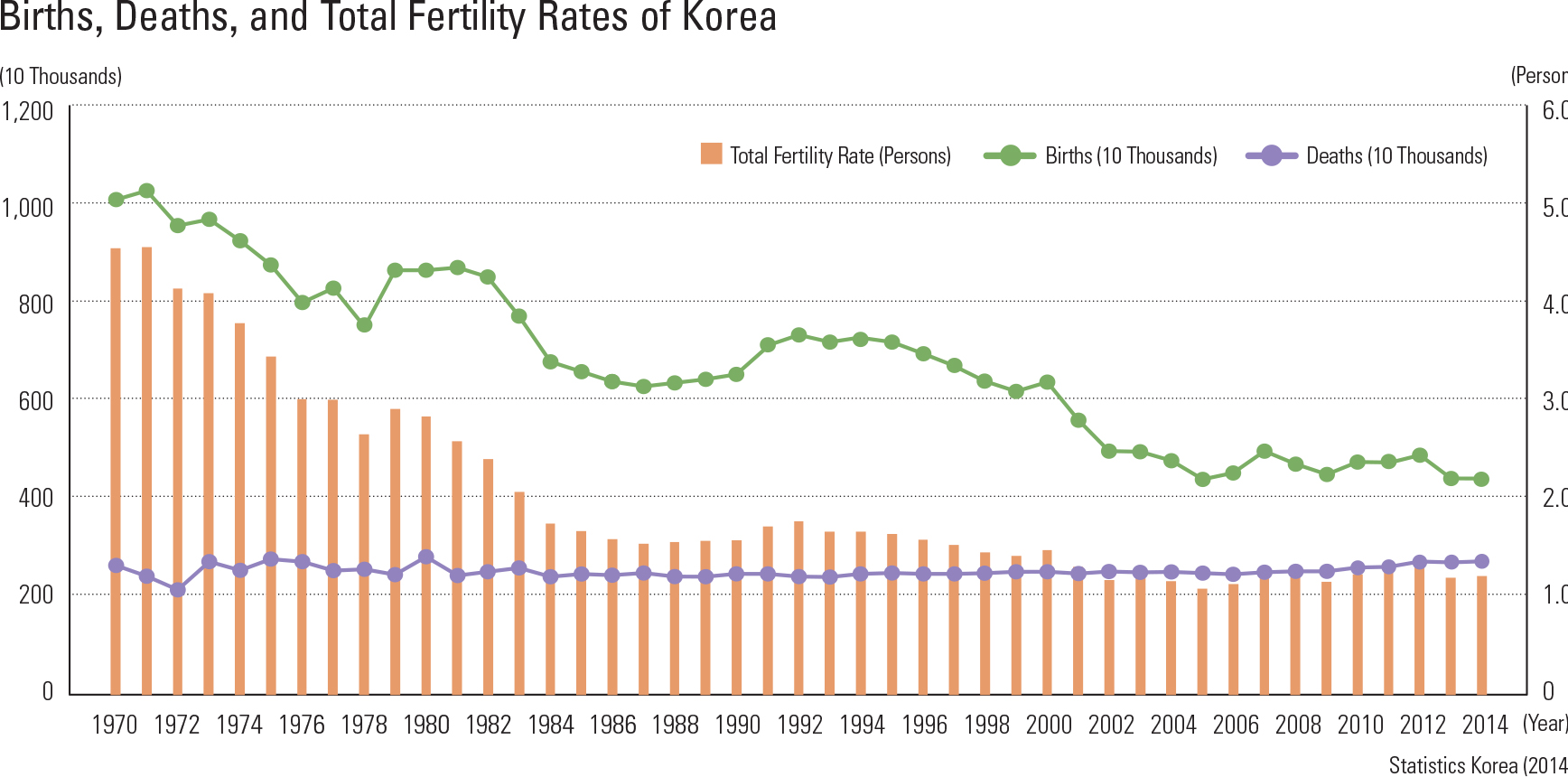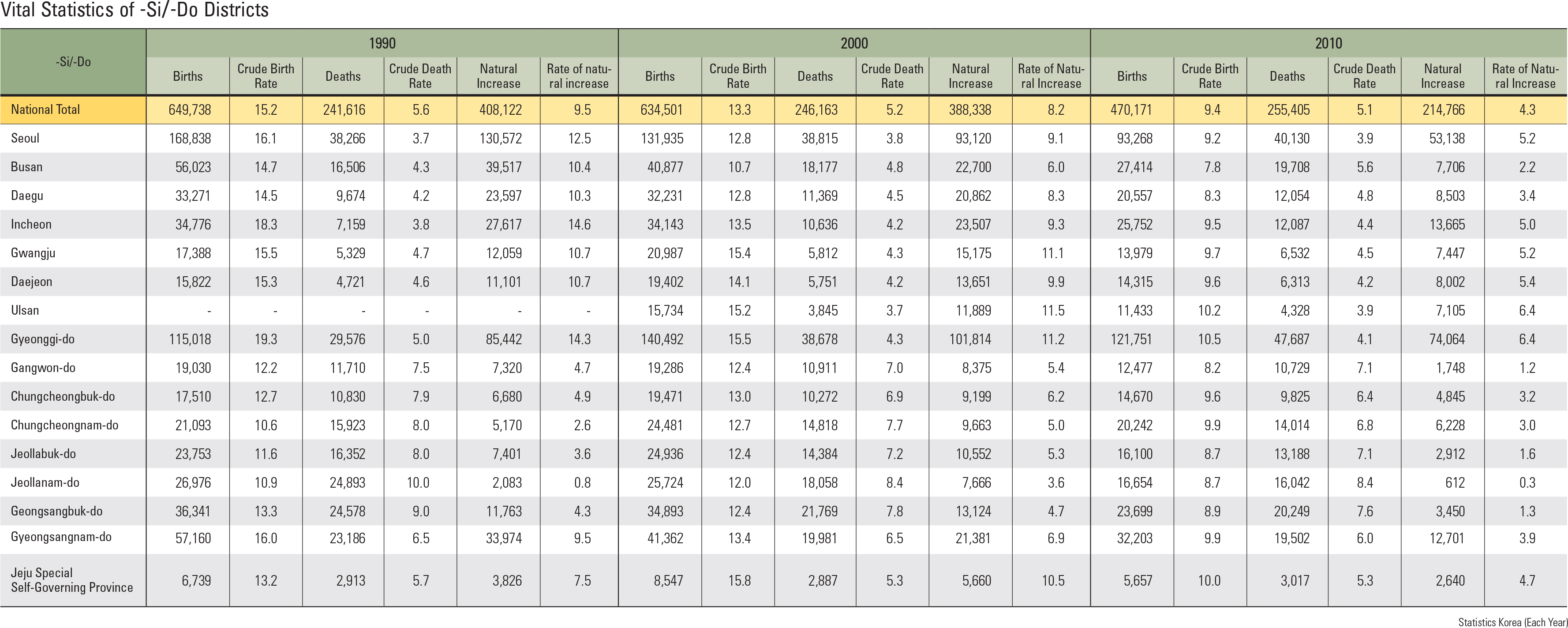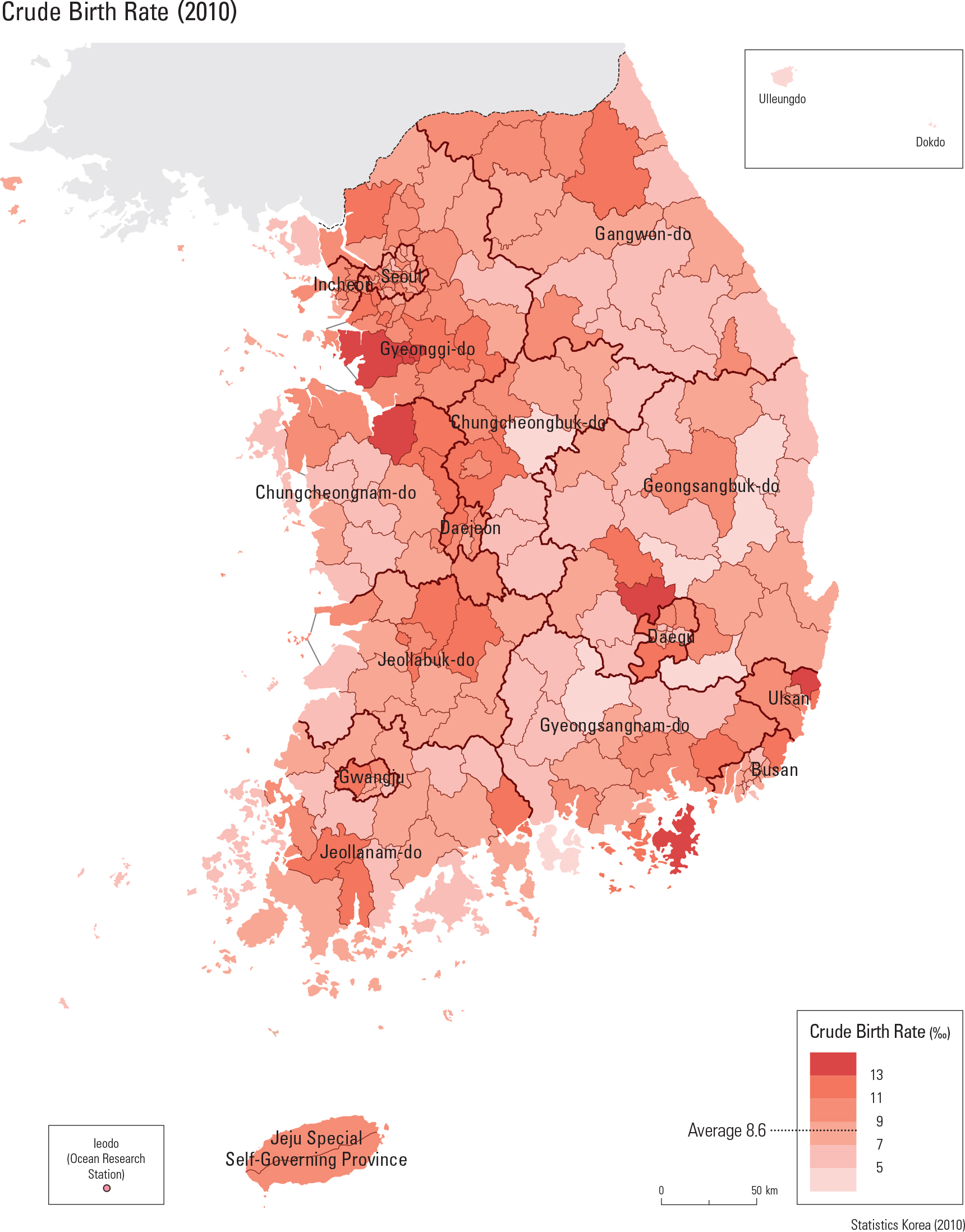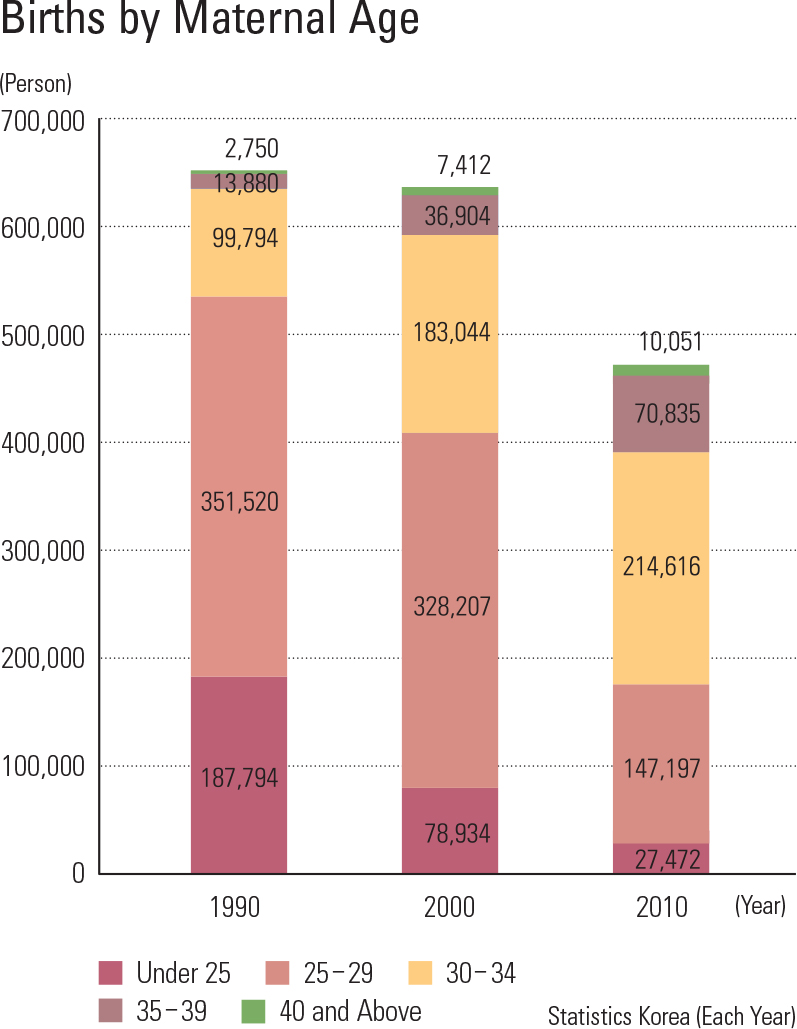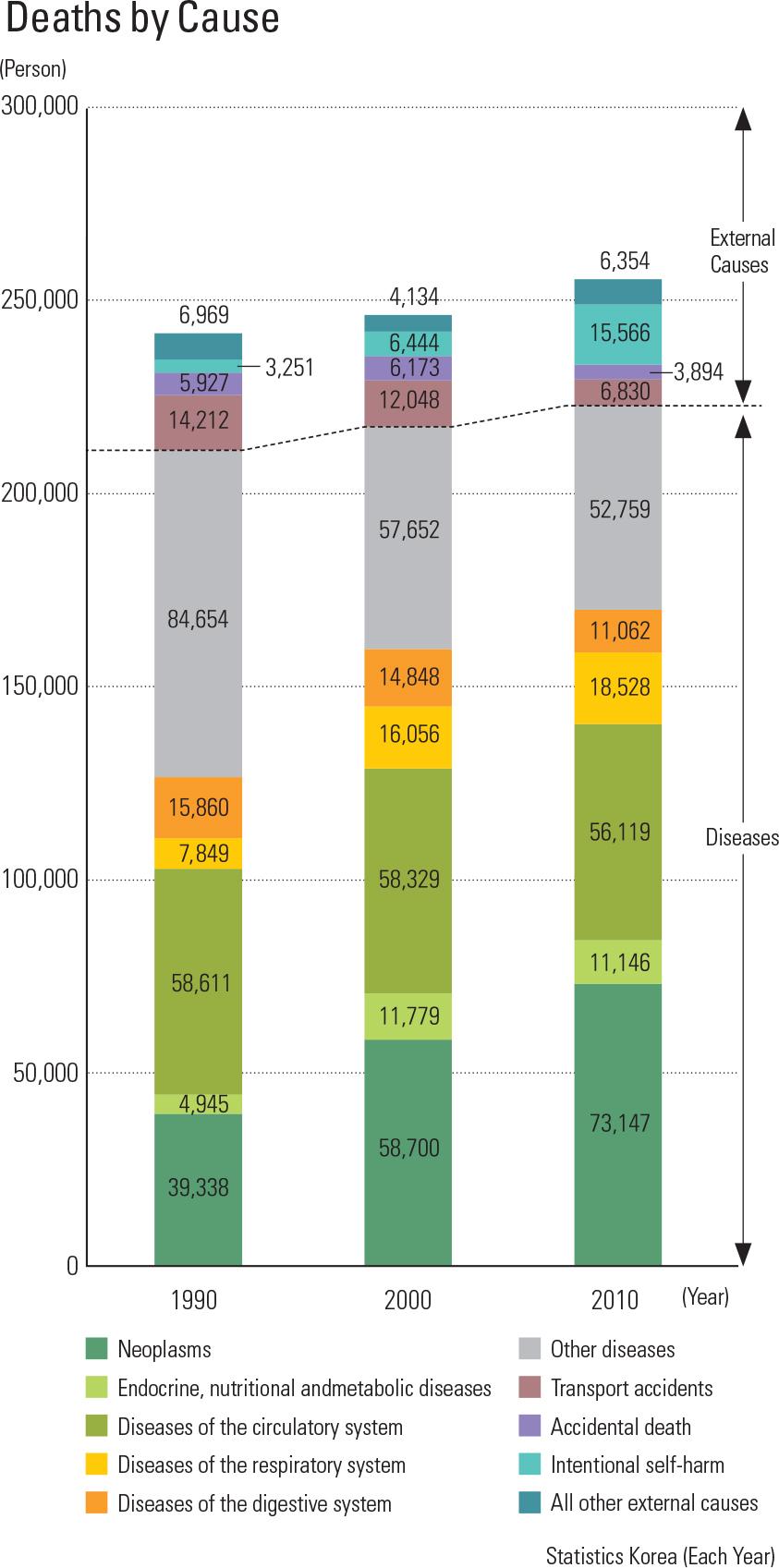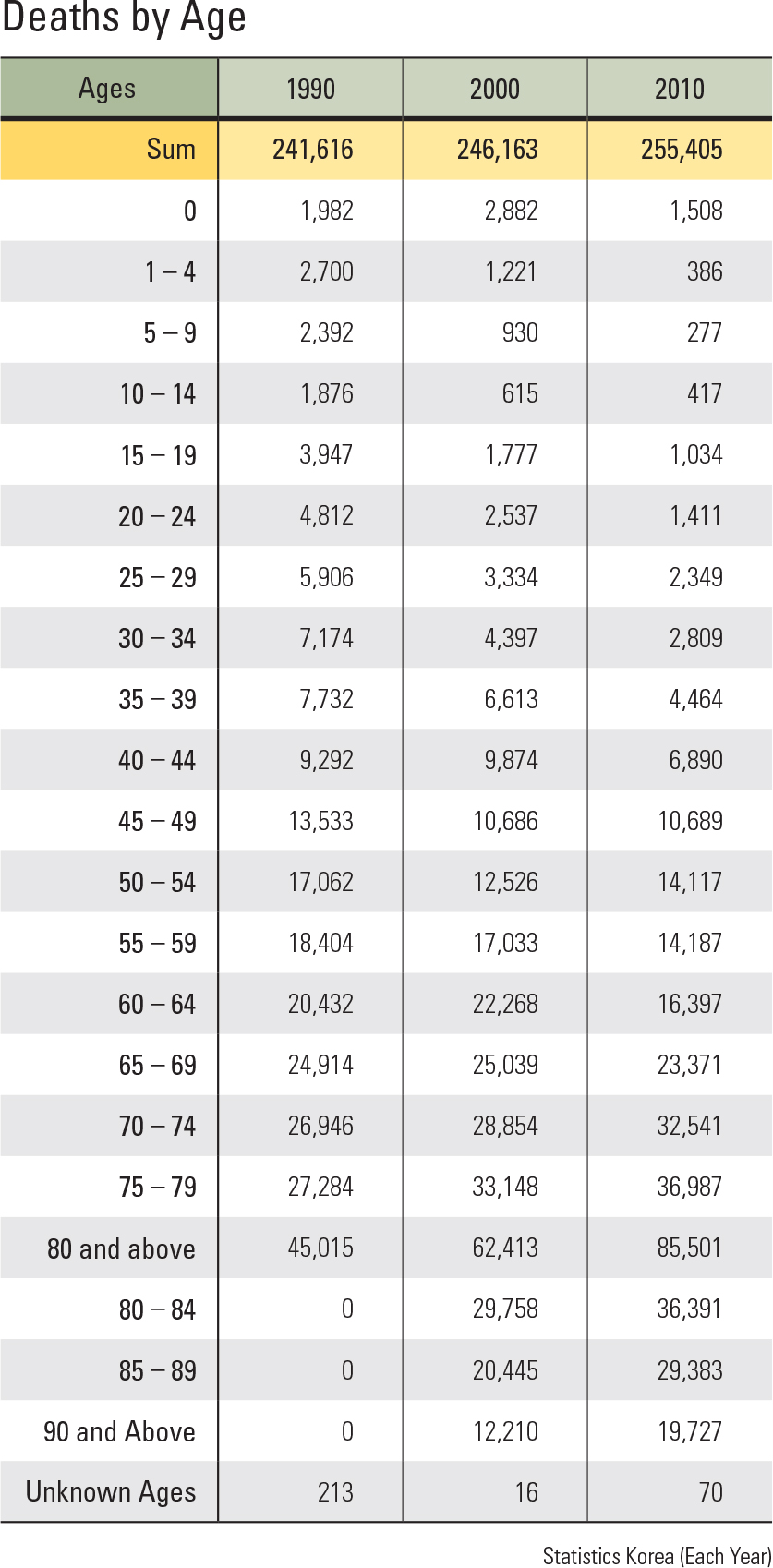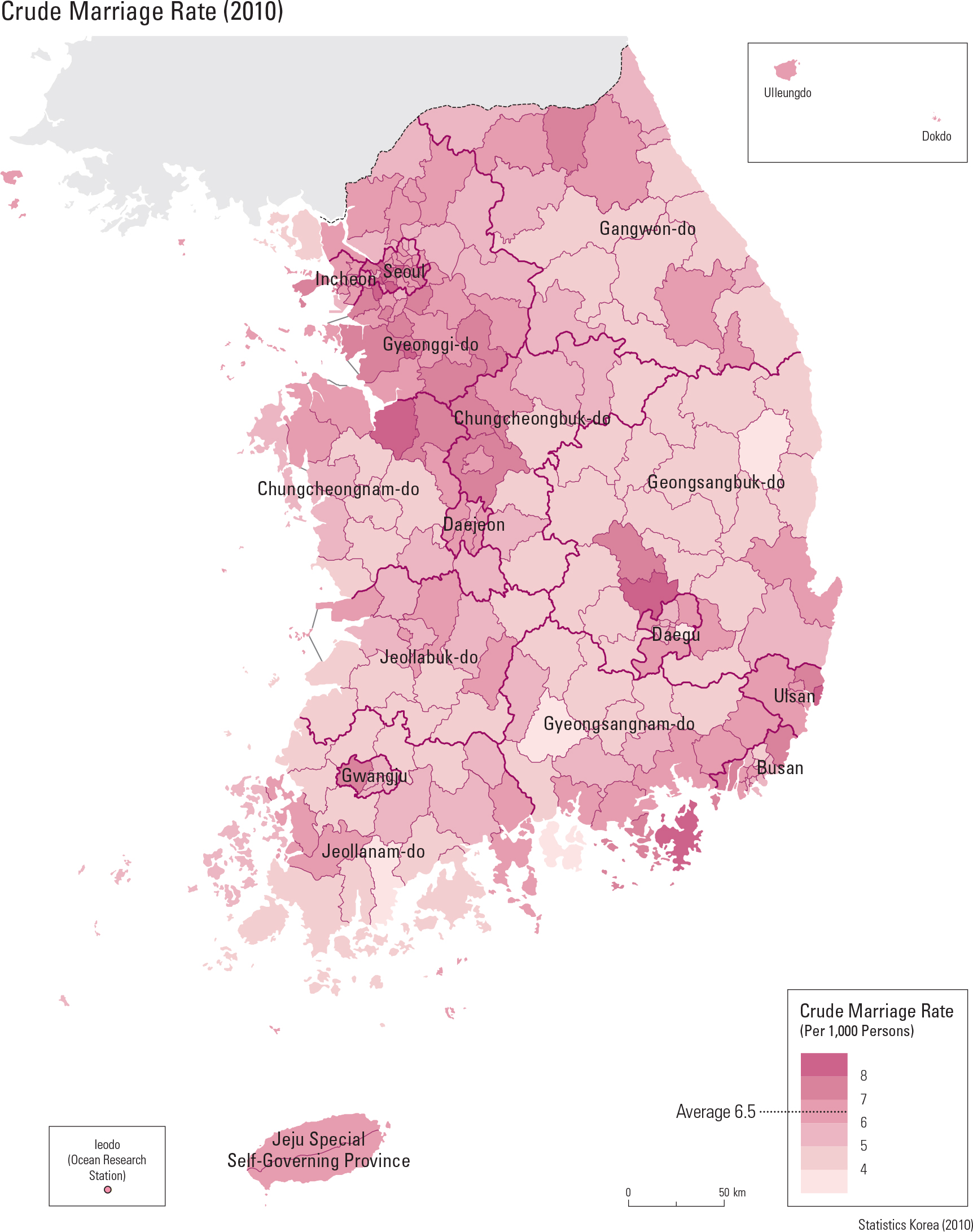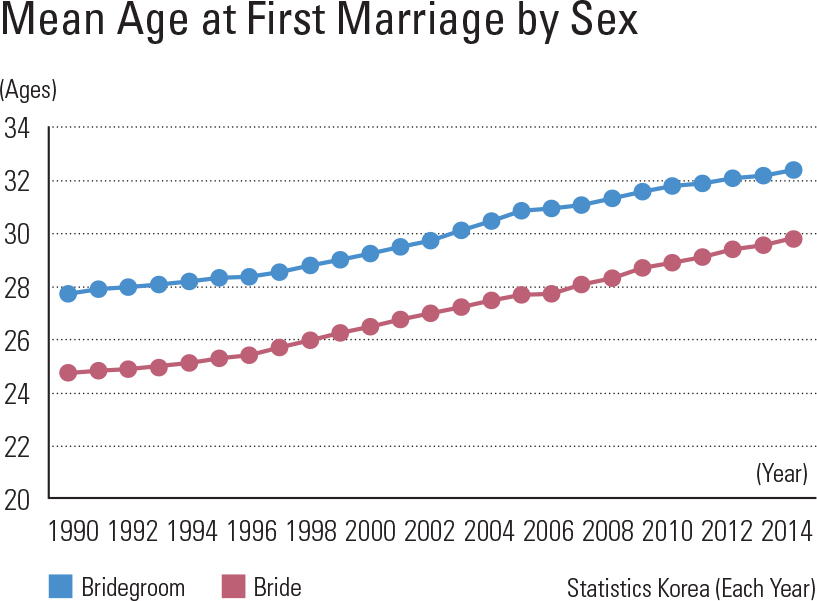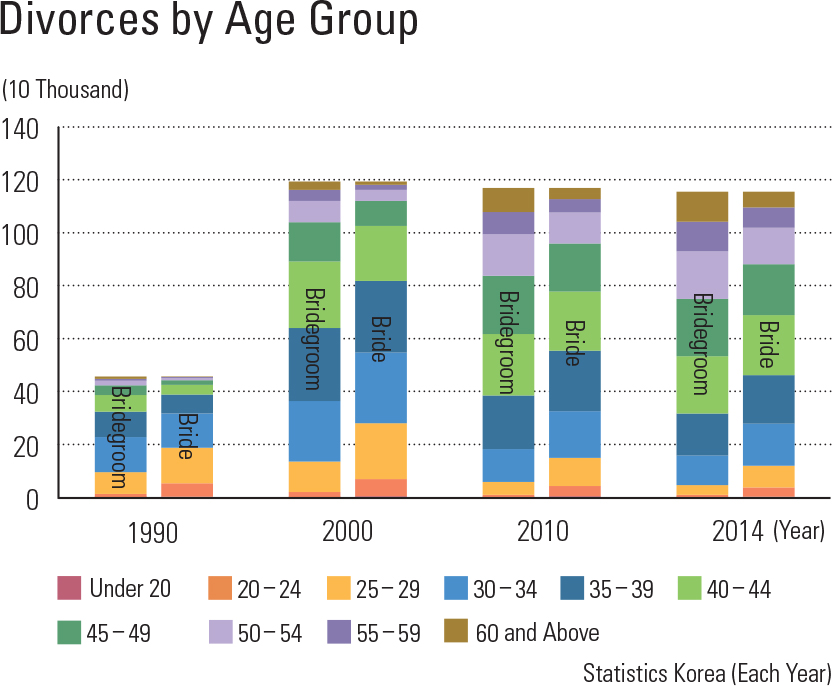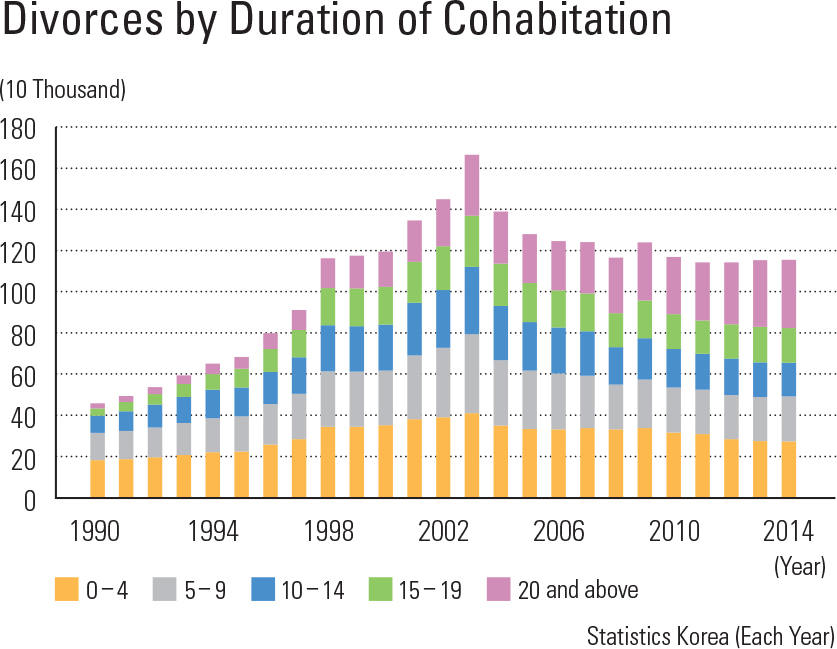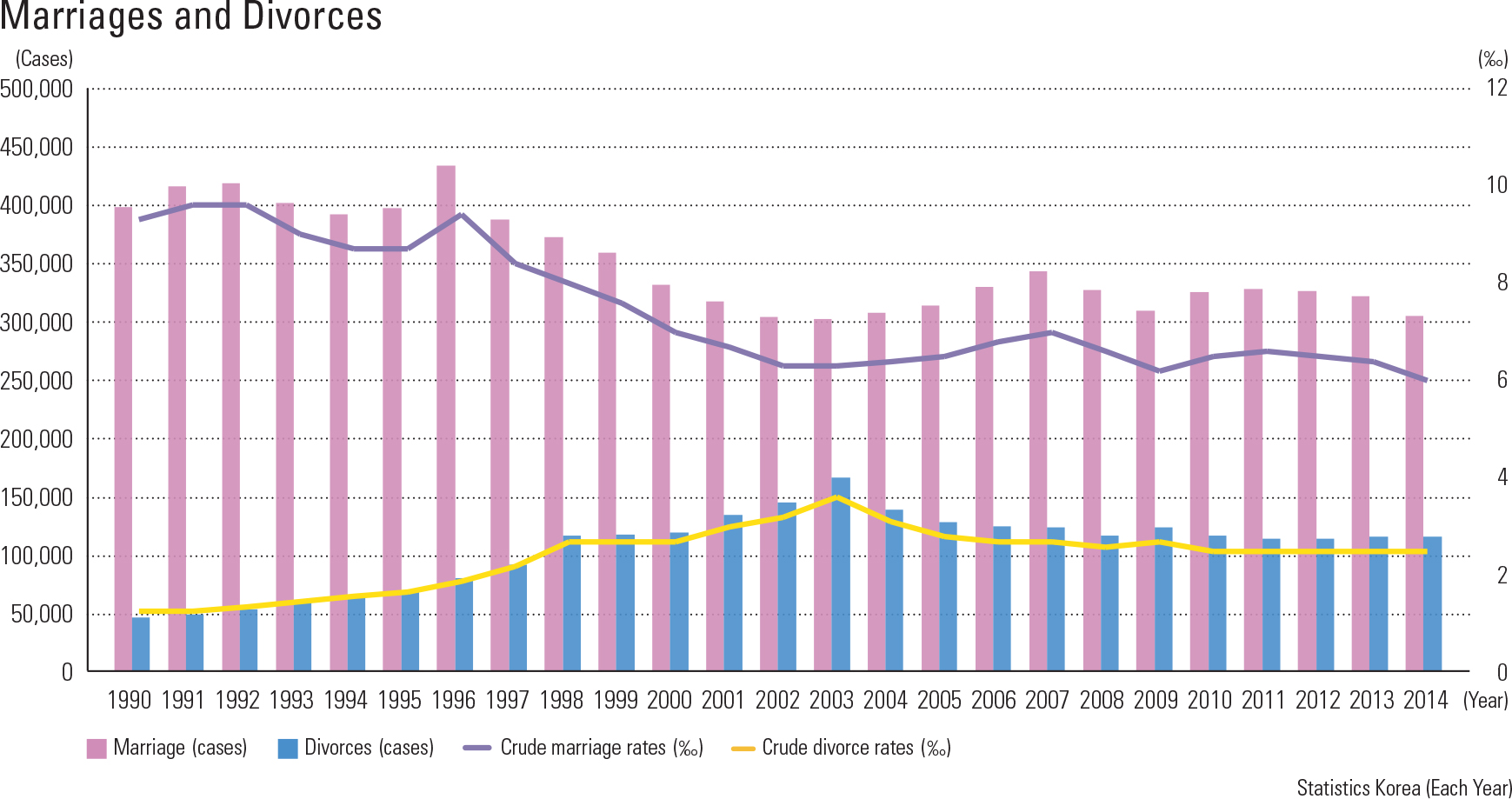English III
Population changes can be observed by tracking births, deaths, marriages, and divorces. These sta- tistics related to important life events are collec- tively referred to as vital statistics. The total fer- tility rate, which refers to the number of children born per woman, remained above 4 until 1973. It gradually fell to 2.1 in 1983, and by the 2000s became one of the lowest in the world. It was 1.2 as of 2014. The low fertility rate is directly relat- ed to the crude birth rate, which is the number of births per 1,000 persons. Korea’s crude birth rate is 8.6. Nevertheless, Korea’s crude death rate (the number of deaths per 1,000 persons) is 5.4. The rate of natural increase (the difference between births and deaths) is 3.2 per 1,000 persons. Met- ropolitan areas have higher total fertility rates, while the rates of natural increase are higher in the Greater Seoul Metropolitan area, northern Chungcheongnam-do, and Busan-Ulsan regions.
page_2 |


